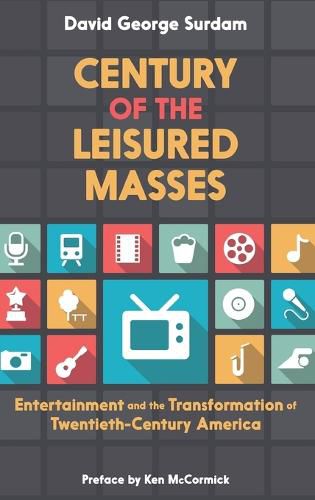Readings Newsletter
Become a Readings Member to make your shopping experience even easier.
Sign in or sign up for free!
You’re not far away from qualifying for FREE standard shipping within Australia
You’ve qualified for FREE standard shipping within Australia
The cart is loading…






American living standards improved considerably between 1900 and 2000. While most observers focus on gains in per-capita income as a measure of economic well-being, economists have used other measures of well-being: height, weight, and longevity. The increased amount of leisure time per week and across people’s lifetimes, however, has been an unsung aspect of the improved standard of living in America. In Century of the Leisured Masses, David George Surdam explores the growing presence of leisure activities in Americans’ lives and how this development came out throughout the twentieth century. Most Americans have gone from working fifty-five or more hours per week to working fewer than forty, although many Americans at the top rungs of the economic ladder continue to work long hours. Not only do more Americans have more time to devote to other activities, they are able to enjoy higher-quality leisure. New forms of leisure have given Americans more choices, better quality, and greater convenience. For instance, in addition to producing music themselves, they can now listen to the most talented musicians when and where they want. Television began as black and white on small screens; within fifty years, Americans had a cast of dozens of channels to choose from. They could also purchase favorite shows and movies to watch at their convenience. Even Americans with low incomes enjoyed television and other new forms of leisure. This growth of leisure resulted from a combination of growing productivity, better health, and technology. American workers became more productive and chose to spend their improved productivity and higher wages by consuming more, taking more time off, and enjoying better working conditions. By century’s end, relatively few Americans were engaged in arduous, dangerous, and stultifying occupations. The reign of tyranny on the shop floor, in retail shops, and in offices was mitigated; many Americans could even enjoy leisure activities during work hours.Failure to consider the gains in leisure time and leisure consumption understates the gains in American living standards. With Century of the Leisured Masses, Surdam has comprehensively documented and examined the developments in this important marker of well-being throughout the past century.
$9.00 standard shipping within Australia
FREE standard shipping within Australia for orders over $100.00
Express & International shipping calculated at checkout
American living standards improved considerably between 1900 and 2000. While most observers focus on gains in per-capita income as a measure of economic well-being, economists have used other measures of well-being: height, weight, and longevity. The increased amount of leisure time per week and across people’s lifetimes, however, has been an unsung aspect of the improved standard of living in America. In Century of the Leisured Masses, David George Surdam explores the growing presence of leisure activities in Americans’ lives and how this development came out throughout the twentieth century. Most Americans have gone from working fifty-five or more hours per week to working fewer than forty, although many Americans at the top rungs of the economic ladder continue to work long hours. Not only do more Americans have more time to devote to other activities, they are able to enjoy higher-quality leisure. New forms of leisure have given Americans more choices, better quality, and greater convenience. For instance, in addition to producing music themselves, they can now listen to the most talented musicians when and where they want. Television began as black and white on small screens; within fifty years, Americans had a cast of dozens of channels to choose from. They could also purchase favorite shows and movies to watch at their convenience. Even Americans with low incomes enjoyed television and other new forms of leisure. This growth of leisure resulted from a combination of growing productivity, better health, and technology. American workers became more productive and chose to spend their improved productivity and higher wages by consuming more, taking more time off, and enjoying better working conditions. By century’s end, relatively few Americans were engaged in arduous, dangerous, and stultifying occupations. The reign of tyranny on the shop floor, in retail shops, and in offices was mitigated; many Americans could even enjoy leisure activities during work hours.Failure to consider the gains in leisure time and leisure consumption understates the gains in American living standards. With Century of the Leisured Masses, Surdam has comprehensively documented and examined the developments in this important marker of well-being throughout the past century.